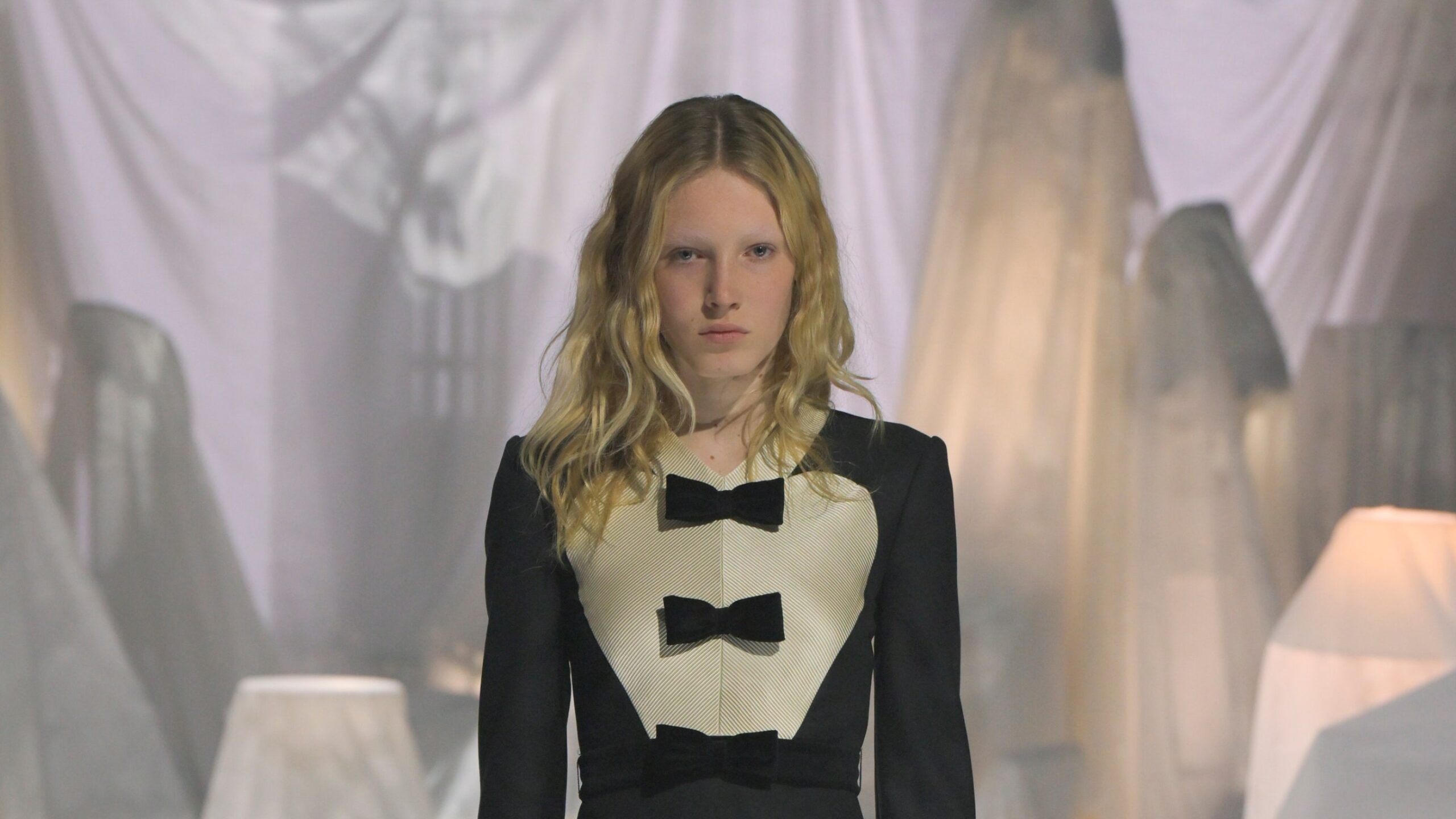
Well, that was sensational! After a two-year gap, Alessandro Michele was back on the runway today in Paris, the new man at Valentino. In his absence, fashion has fallen into a quiet luxury funk that we’ve all gotten so used to we didn’t realize quite how good his maximal, more-is-better vibes could make us feel. The mood was ecstatic as people left the show. This crowd is prone to hyperbole, but an overheard remark, “the king is back,” had a ring of truth to it.
A consummate showman, Michele set out to do Valentino his way. After years of the brand showing at the Hôtel Salomon de Rothschild in the 8th arrondissement, we were out on the Périphérique, where the Dojo de Paris presides over the side of the highway. It was an eyebrow-raising location for Valentino, a maison whose bon vivant founder is as famous for his grand homes (and yacht) as he is for ruffles and the color red.
Michele had transformed the arena’s cavernous basement with love seats, chairs, and ottomans (along with some armoires and giant birdcages) shrouded in dust covers atop cracked-mirror flooring. We were perhaps in one of those stately houses, excavating its hidden treasures or raising ghosts—Michele loves a metaphor, both visual and literal. Ambient music echoed through the space as it filled with the designer’s friends including Elton John, Harry Styles, Florence Welch, Colman Domingo, and Maneskin’s Damiano David.
Into this atmosphere, Michele sent out 85 looks—modest by the standards of the surprise resort collection he dropped online in June—as eccentric and extraordinary as anything he did for Gucci, but with a lightness, femininity, and exquisiteness of detail that can only be Valentino. In a meeting before the show, Michele said he was in the house’s archives before the end of his first day at the company. “It’s so alive; it’s a place with a lot of history,” he observed. “You can really find inside everything: the ’80s, ’70s, ’60s. For a guy like me who adores analyzing all this stuff, it’s a privilege.”
He said he started by looking at pieces that impressed him aesthetically—“the very beautiful and light ruffles, the doll look that came from the ’60s and ’70s, and an ’80s power suit with a kind of sensuality that’s [actually] very démodé now.” If anybody can make the démodé modern, Michele can; after all, he did it once before, reshaping fashion and turning around Gucci’s fortunes with his inclusive gender-fluid vision for the brand.
